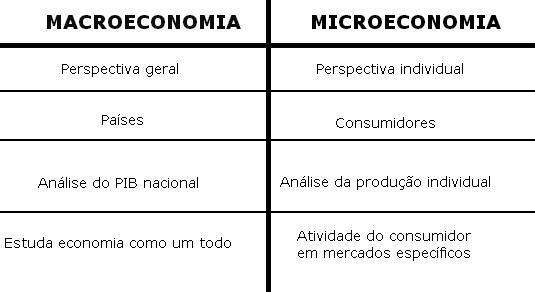Inflation is an economic term that means a generalized increase in prices in assets and services.
The result is that the population's purchasing power falls because prices are higher, making products less accessible.
In short, with inflation, money is gradually worth less and, over time, it is used to buy a smaller quantity of goods or services.
Calculation of Inflation
Inflation is "measured" or verified monthly through household consumption. This way of measuring prices generates what, in economics, is called an index.
In Brazil, the inflation index is the INPC (Consumer Price Index) which is checked every month by the IBGE (Brazilian Institute of Geography and Statistics).
All families have different consumption patterns. For example, some consume meat every day and others only once a month.
Thus, to understand the behavior of prices for the average of family units, IBGE established what it calls the target population.
This group includes families whose monthly income varies between one and five minimum wages.
These families provide IBGE technicians with the prices of products they purchased throughout the month.
These products are periodically defined through an instrument called POF (Family Budget Survey).
This research includes the services, goods and products consumed by the target population, which informs how much they paid for each one.
Inflation Indices
Considering the difference in family patterns, there are other indices that are also used by the IBGE to calculate inflation in Brazil.
The main one is the CPI (Consumer Price Index), which results from the observation of other price verification indices.
Among them is the IPCA (Broad Consumer Price Index), used to ascertain household consumption who receive between one and 40 minimum wages, regardless of the source of income and residents in the areas urban areas.
The IPCA-15 and the Basic Basket Index are also used to measure inflation.
Price Variations
Some products are more important in price variation than others. Among them are permanent services such as electricity, water supply and sewage collection, telephone and transport.
In the calculation of prices, these services have greater weight, for example, than a candy or a can of cooking oil. Price comparison is monthly and yearly.
Therefore, it is possible to know the behavior of prices and, from this data, the possibility or not of inflation.
Inflation Effects
Inflation is marked by internal and external effects. Internally, the process is marked by the increase in the amount of money for the purchase of products. From the external point of view, currency devaluation occurs.
Inflation Extremes
The Roman Empire and Germany experienced the two classic examples of extremes of inflation in history. In the Roman Empire, in the era of Emperor Diocletian, there was a devaluation of the imperial currency, the denarii.
Coins were made of pure gold and had to be made of impure metal. The emperor did not see the cause, blamed the merchants and punished anyone who charged prices above those fixed.
In the 20th century, Germany experienced what was considered the greatest inflation in history. Between January 1919 and November 1923, prices increased by 1,000,000,000,000%.
The level of inflation was one of the main causes for the outbreak of World War I and the Germans accused the signatory nations of the Treaty of Versailles of the damage.
Deflation
Deflation is the inverse process of inflation. With it, prices in general fall and, if there is no control over economic policy, the result of the process is the country's recession.
Fees
Among the main signs of inflation are interest rates. In short, interest is the price of money.
They consist of what will be paid on what was borrowed in financial operations, they are charged in currency and current and expressed as a percentage.
Selic rate
Selic Rate is the name of the interest rate that the Brazilian government uses to calculate the interest rate of those who lend money.
The Selic is also called the Referential Rate and is calculated every month by the Copom (Economic Policy Committee), which is subordinate to the Central Bank of Brazil.
read more:
- Financial math
- Economic Crisis in Brazil
- Fernando Henrique Cardoso
- GDP
- 1929 crisis

